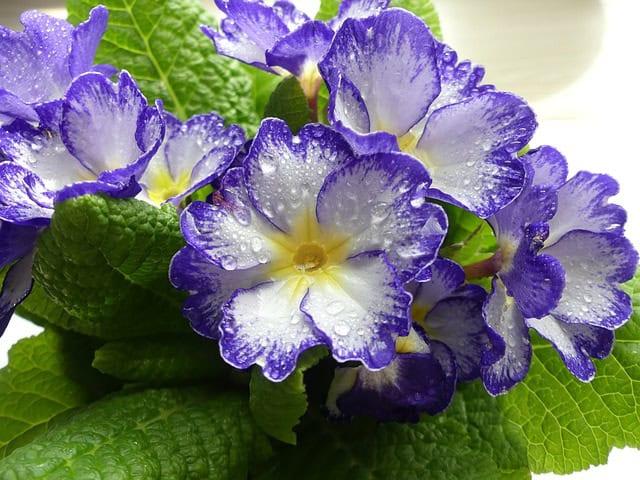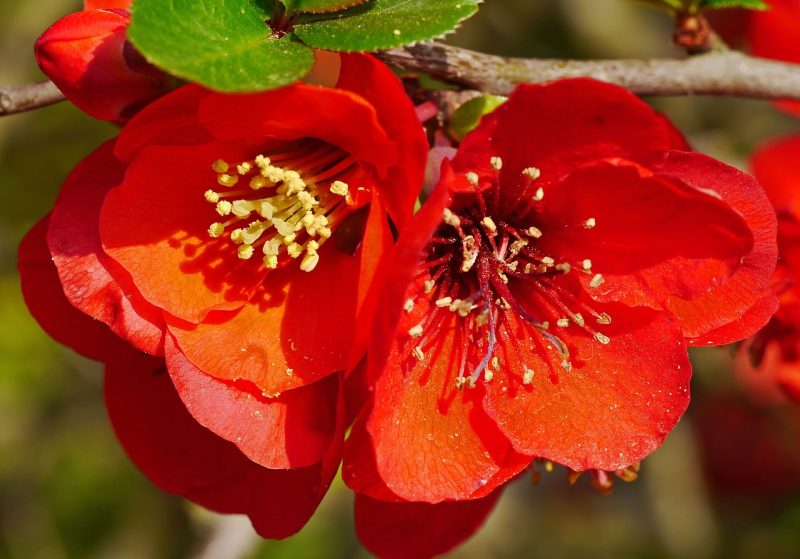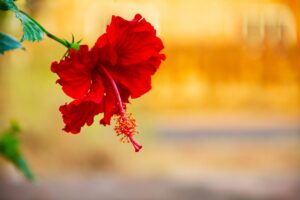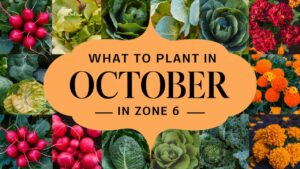Winter can seem like a barren time for gardeners in Zone 8, where temperate conditions allow for a diverse palette of plant life even in the colder months. This blog post explores remarkable winter flowers that not only thrive in this climate but also embellish gardens with their unique characteristics and beauty.
American Witch Hazel (Hamamelis Virginiana)
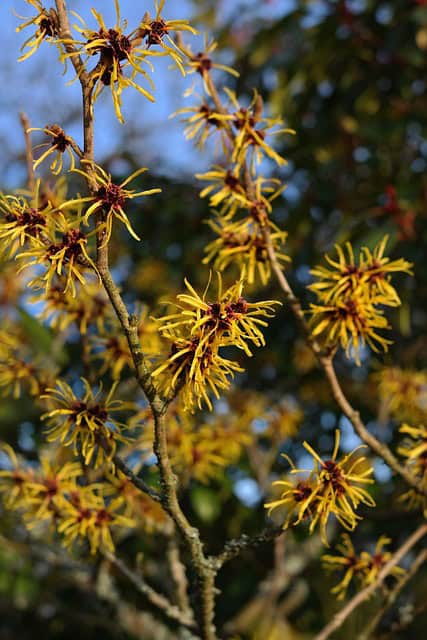
The American Witch Hazel is a true botanical treasure for Zone 8 gardens. Renowned for its peculiar flowering habits, this deciduous shrub features bright yellow or orange ribbon-like blooms that unfurl in late winter to early spring, often before the leaves emerge. The remarkable timing of its blossoms not only captivates gardeners but also provides nectar for early pollinators such as bees.
An intriguing aspect of the Witch Hazel is its ability to thrive in various soil types, showcasing its adaptability. It prefers moist, well-draining soils but can tolerate dry conditions once established. This resilience means that gardeners should not hesitate to plant it in less-than-ideal locations, provided there is good sunlight. The plant also boasts a unique historical significance, as Native Americans once utilized it for its medicinal properties, treating various ailments.
Beyond its stunning flowers, the American Witch Hazel offers an attractive, multi-season profile. In the fall, its leaves transition to a brilliant yellow, adding vibrant hues to your landscape even as winter approaches. These features make it a versatile addition to any winter garden.
Camellia
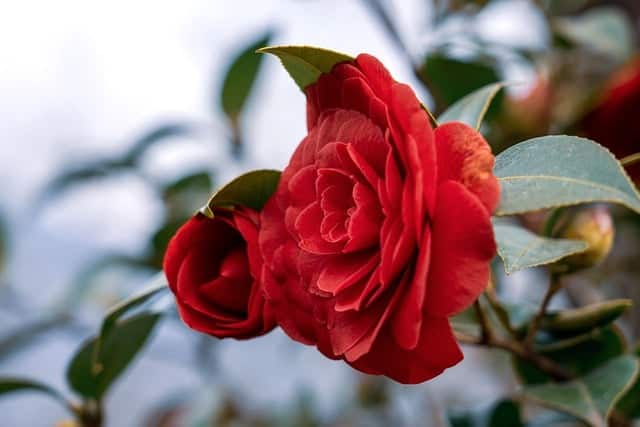
Another stunning pick for winter blooms in Zone 8 is the Camellia. These evergreen shrubs are celebrated for their lush foliage and large, exquisite flowers that come in shades of pink, red, and white. Blooming from late fall through early spring, Camellias provide a cheerful splash of color when most other plants remain dormant.
The flower structure of the Camellia is particularly fascinating; its petals can be single, semi-double, or double, resembling peonies in some varieties. Many gardeners appreciate Camellias not only for their ornamental appeal but also for their versatility—they thrive in both sun and partial shade, making them suitable for various garden designs.
Proper care of Camellias involves ensuring adequate moisture, especially during dry spells. While these plants can tolerate some drought, they flourish best in locations with regular watering. Additionally, amending the soil with organic mulch helps to maintain moisture and improve soil quality. Gardeners eager for winter blooms can enhance their camellia collection with some varieties that have fragrant flowers, adding another sensory layer to the winter garden experience.
Daphne
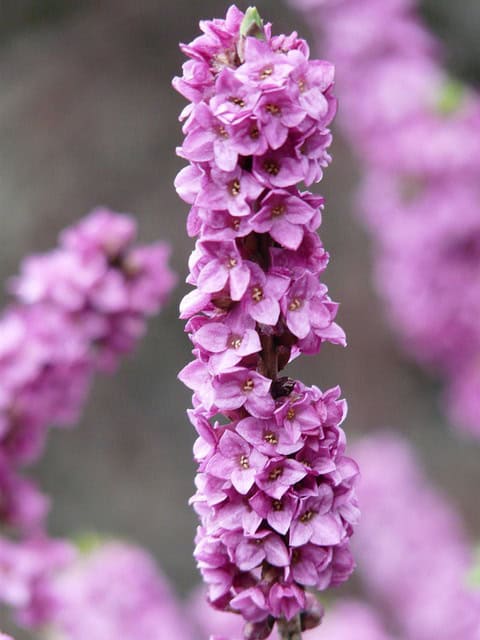
Daphne is perhaps one of the most enchanting winter-flowering shrubs available to Zone 8 gardeners. Known for their intoxicating fragrance, Daphne’s delicate pink or white clusters bloom in late winter, filling the air with a sweet aroma that can uplift the spirits during the chilly months. Their compact growth habit makes them ideal for smaller spaces or as part of a mixed border.
This plant is faced with challenges in cultivation, often requiring the right conditions to thrive. Daphnes appreciate well-drained soil rich in organic matter, and they prefer dappled shade to protect them from the harsh afternoon sun. One of the key components to their successful growth is ensuring they are not overwatered—overly wet soil can compromise their health and lead to root rot.
What sets Daphne apart is its durability coupled with its sensitive nature; while it can endure cold temperatures down to zone 8, it is also susceptible to extreme dry spells. As such, proactive gardeners can extend the overall longevity and vitality of these plants by providing consistent moisture during the growing season.
Japanese Quince (Chaenomeles Japonica)
Japanese Quince, known scientifically as Chaenomeles japonica, is a striking shrub that brings energy to winter gardens in Zone 8. With its charming cup-shaped flowers emerging in early spring, often bright red or pink, Japanese Quince not only heralds the arrival of spring but also captivates viewers in the stillness of winter. The blooms are typically borne on bare branches, which adds to their striking visual contrast against the backdrop of winter’s muted tones.
An attractive feature of Japanese Quince is its ability to develop into a sprawling, thorny shrub that can act as both an ornamental landscape element and a natural hedge. The leaves begin to unfurl as the weather warms, adding lush greenery after the intense blooms. Additionally, the plant produces small fruits, resembling tiny apples, that not only add intrigue but can also be used in jellies and preserves—offering both aesthetic and edible rewards for gardeners.
For optimal growth, Japanese Quince prefers well-drained soil and can tolerate poor conditions, including drought once established. Positioning it in full sun to partial shade ensures robust blooming and a healthy plant. Besides enhancing winter color, the winter flowering characteristics of Japanese Quince make it a must-have for those looking to give their gardens an early infusion of life.
Magnolia

Magnolia trees and shrubs are a beloved staple in many gardens, appreciated for their dramatic blossoms and perennial elegance. In winter, some dwarfish varieties of Magnolia, such as Magnolia stellata (Star Magnolia) or Magnolia liliiflora (Liliflora Magnolia), start to show their stunning, fragrant flowers as early as late winter, providing crucial color before spring fully arrives.
The showy flowers showcase an array of colors, ranging from pure white to delicate shades of pink and lavender. Not only are they visually stunning, but they also fill the air with a delightful fragrance—a sensory experience that makes them a favorite among gardeners and passersby alike. What enhances their attractiveness is the structure of the flowers, with ample, waxy petals that can stand resilient against winter frosts.
Magnolias thrive in moist, well-drained soil and flourish in full sun to light shade—this flexibility allows them to adapt across various garden designs. Their trees can achieve impressive heights, making them ideal as focal points. For smaller gardens, consider dwarf varieties that maintain proportion while still delivering the enchanting blooms characteristic of the genus. These majestic plants contribute both beauty and a nostalgic ambiance to winter gardens, serving as a reminder of the spring blooms to come.
Mahonia
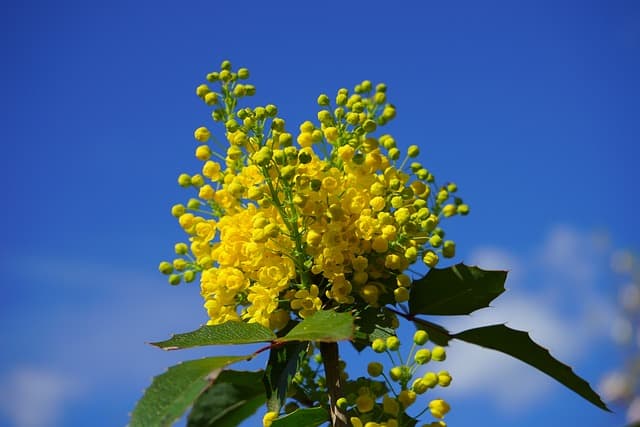
Mahonia is a lesser-known yet phenomenally rewarding choice for winter gardens in Zone 8. Commonly referred to as Oregon Grape, this evergreen shrub showcases clusters of bright yellow flowers emerging in late winter through early spring, accentuating the garden just when it requires a vivid touch of color. The juxtaposition of its glossy, spiny leaves and cheerful blossoms creates an striking dichotomy that adds texture and depth to the winter landscape.
A unique aspect of Mahonia is its ability to thrive in shaded conditions, making it a versatile choice for woodland gardens or areas that receive limited sunlight. Its hardiness allows it to flourish even in regions with less than ideal soil, though it fares best in soil rich in organic matter. After blooming, Mahonia produces blue-black berries that are not only visually appealing but also nourish birds and other wildlife, solidifying its role as an ecological asset.
In terms of care, Mahonia is relatively low-maintenance but can benefit from periodic pruning to shape and encourage new growth. The presence of Mahonia in your winter garden brings not only aesthetic delight but also ecological diversity, ensuring your landscape remains alive with activity even in cooler months.
Winter Jasmine (Jasminum Nudiflorum)
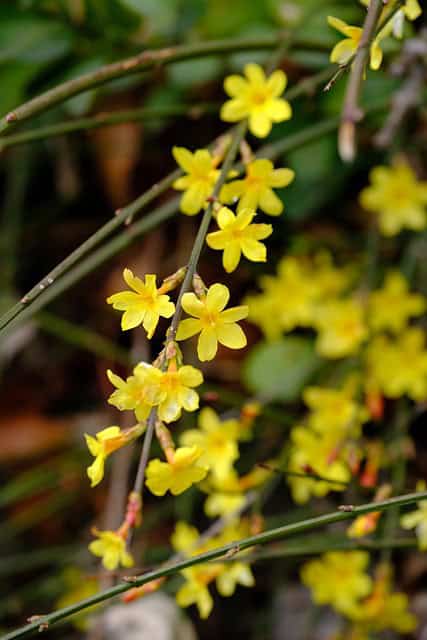
Winter Jasmine, or Jasminum nudiflorum, is a delightful choice for winter gardens due to its cheerful yellow flowers and sprawling growth habit. This deciduous shrub can come alive in the cold months when it produces clusters of small, sunny blooms that emerge in late winter, often going unnoticed until they create a stunning contrast against the bare branches of surrounding trees and shrubs.
One of Winter Jasmine’s most appealing attributes is its ability to flourish in varying light conditions, thriving in both full sun and partial shade. The plant’s low-growing, arching stems allow it to drape elegantly over walls or containers, making it ideal for softening hard edges in landscapes. It can also be used effectively as a ground cover, spreading out as it grows.
Although drought-tolerant once established, Winter Jasmine appreciates a well-draining soil and regular watering during its formative years to encourage robust growth. Its adaptability and resilience make it a charming addition to winter gardens, invigorating the landscape with hints of brightness before the days start to lengthen and spring arrives.
Perennials
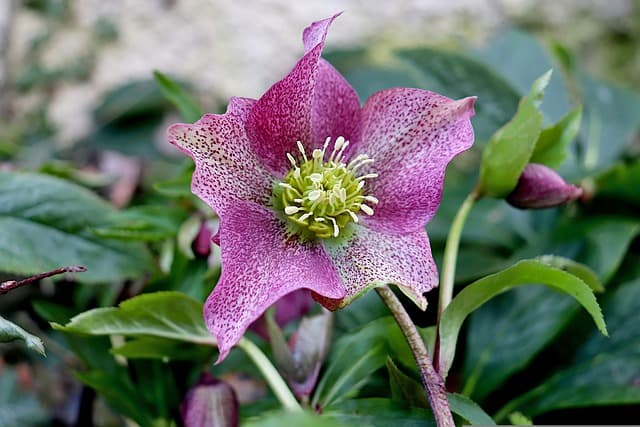
While many may not consider perennials for winter interest, there are several exceptional varieties that can provide winter blooms or maintain visual appeal during colder months in Zone 8. Notably, plants such as Hellebores (often known as Lenten Roses) are iconic winter bloomers. They offer stunning flowers in various colors—from pure whites to deep purples—that appear as early as late winter while their green, leathery leaves provide year-round coverage.
Some perennials like Gaultheria procumbens, commonly known as wintergreen, are cherished not only for their small, white bell-shaped flowers that bloom in late winter, but also for their striking red berries that persist throughout the season. This low-growing evergreen is excellent for adding texture and interest to garden beds or woodland settings.
When planting perennials for winter interest, consider groupings that include bloomers, evergreens, and those with unique foliage to create layers of visual appeal. Additionally, many perennials prefer well-drained soil and can benefit from mulching, which helps retain moisture and temperature stability as the cold months ebb and flow.
English Primrose (Primula Vulgaris)
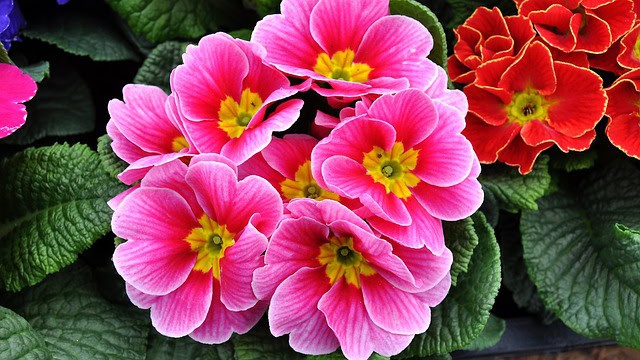
The English Primrose (Primula vulgaris) is a classic winter flowering perennial that brings warmth and charm to gardens in Zone 8. These hardy plants display clusters of vibrant blossoms in colors ranging from sunny yellows to softer pastel shades, and they often bloom as early as late winter, providing a much-needed burst of brightness.
One of the prime features of English Primrose is its ability to thrive in cooler temperatures and transitional seasons. Planting options abound as these flowers can add vibrant spots of color to garden borders or containers, and they also thrive in shady areas, making them a versatile choice for creating whimsical woodland gardens or shaded patios.
To nurture English Primroses, it is best to position them in well-drained, moist soil that simulates their native woodland habitat. Regular watering is essential, especially during dry spells, but it’s vital to ensure good drainage to prevent root rot. Groupings of these perennials can create an enchanting tapestry of color, enhancing any winter garden and inviting visiting pollinators, including bees and butterflies, as weather warms.
Glory of the Snow (Chionodoxa)
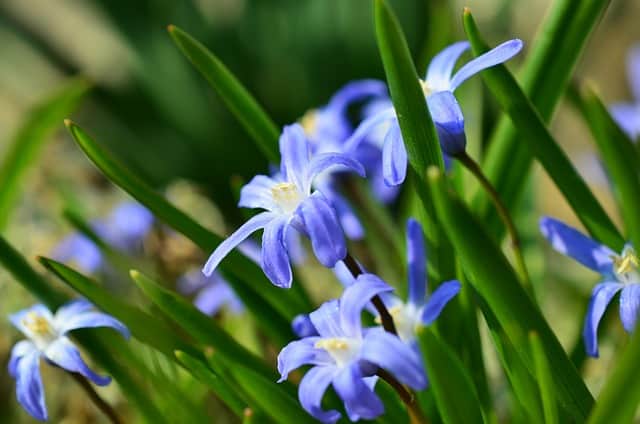
Glory of the Snow, scientifically known as Chionodoxa, is a diminutive bulbous perennial that bursts into bloom as winter begins to wane. The first flowers to emerge in spring, these delicate, star-shaped blossoms feature hues ranging from soft blue to white, often adorned with a captivating dark center. Typically blooming as early as February, Chionodoxa signals the upcoming arrival of spring, bringing joy and hope to gardeners enduring the last vestiges of winter.
These charming flowers tend to thrive in well-drained soils and prefer sunny to partially shaded locations. One of the key benefits of Glory of the Snow is their ability to naturalize, multiplying and forming lovely patches of color year after year. When planted in clusters, they create a stunning ground cover effect beneath deciduous trees or along pathways, where their early blooms can shine before other plants take center stage.
In addition to their visual allure, Glory of the Snow is low-maintenance, requiring minimal care once established. These hardy bulbs are resistant to frost, making them an ideal choice for gardeners looking to introduce early blooms without worrying about harsh winter conditions. Their natural beauty and resilience make Chionodoxa a must-have for any winter garden in Zone 8.
Lenten Rose (Hellebore)
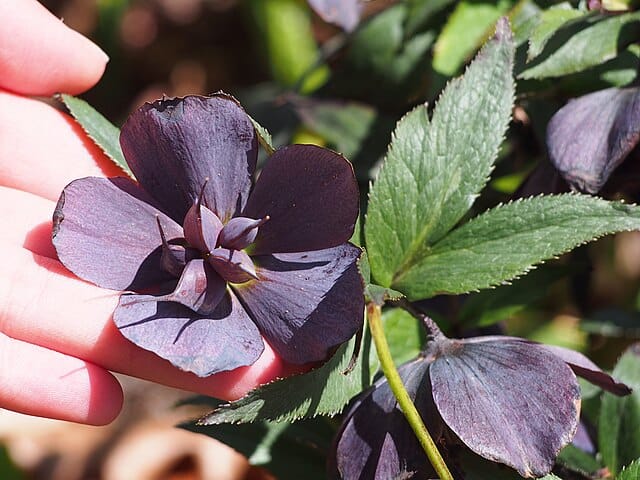
Lenten Rose, or Hellebore, is another winter gem that thrives in the milder climates of Zone 8. Known for its remarkable ability to bloom during winter, Lenten Rose flowers add elegance and character to gardens when most other plants remain dormant. With blooms that can come in various shades—ranging from soft greens and whites to more vibrant pinks and purples—these perennial flowering plants often appear from late winter to early spring, delighting gardeners eager for color.
Hellebores are particularly valued for their glossy, evergreen foliage, which provides year-round interest, even when the flowers are not in bloom. Their foliage’s unique, palmate shape complements the flowers beautifully, creating a lush, vibrant display in whatever setting they adorn.
One of the advantages of Lenten Rose is its tolerance for shade, making it an excellent choice for planting under larger trees or in partially sunny spots. They prefer rich, well-draining soil and benefit from adding organic matter to enhance moisture retention during dry spells. Due to their late winter flowering and ability to withstand cold, Hellebores not only elevate the visual appeal of winter gardens but also attract early pollinators, providing nectar when few food sources are available.
Snowdrops (Galanthus)

Snowdrops, known scientifically as Galanthus, are classic winter perennial bulbs that bring serenity and grace to gardens during the cold months. Characterized by their delicate white blooms that hang like small teardrops, Snowdrops often peek through the snow, heralding late winter or early spring. These charming blossoms typically emerge in clusters, creating a gentle carpet of white that illuminates the garden landscape.
These hardy bulbs thrive in well-drained soil and prefer partial to full shade, often favoring woodland settings. Snowdrops are incredibly resilient, capable of surviving frost and cold temperatures, which makes them excellent candidates for early winter gardens. The ability to bloom in these frigid conditions has earned them a reputation as one of the first flowers to signal the transition into spring.
To plant Snowdrops successfully, locate them in a spot where they will receive some sunlight, ideally in the late afternoon. They require well-draining soil to establish, as overly wet conditions can lead to bulb rot. Once planted, Snowdrops require little attention, as they will naturalize over time, creating larger colonies that bring enduring beauty to the garden through their early blooms.
Winter Aconite (Eranthis Hyemalis)
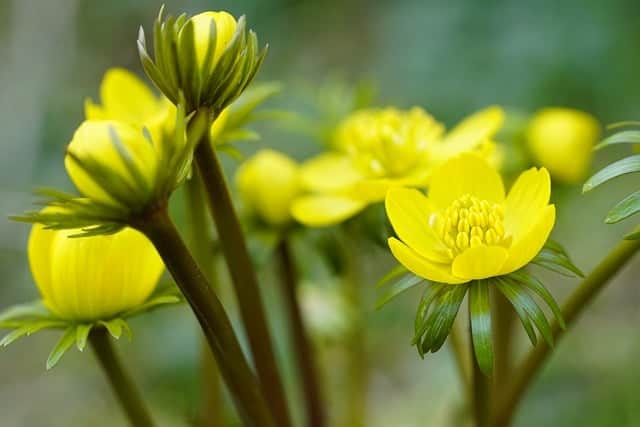
Winter Aconite, or Eranthis hyemalis, is a charming perennial bulb that rises to greet the winter months with sunny yellow flowers. Often emerging in late winter, even before the last frost, the cheerful, cup-shaped blooms are a beacon of warmth and hope amidst the cool earth. The blossoms create a soft, yellow carpet that is particularly striking when planted in large groups, adding a golden hue to areas that may otherwise feel gray and lifeless.
What makes Winter Aconite remarkable is its resilience; as one of the first harbingers of spring, it can withstand snow and frost without losing its vibrant appearance. The plant flourishes best in well-draining soil and can thrive in both sunny and partially shaded areas—making it versatile for various garden settings. Plant it in clusters or drifts under trees or around rock gardens for creating eye-catching, naturalistic displays.
Once flowering is complete, the foliage—palmate in shape—remains lush and green, providing a lovely contrast with other spring blooms. As the growing season progresses, the leaves will fade, allowing nearby plants to take center stage. Winter Aconite is not only visually striking; it also supports early pollinators by providing nectar and pollen, enhancing the ecosystem in your garden.
Winter Heath (Erica Carnea)
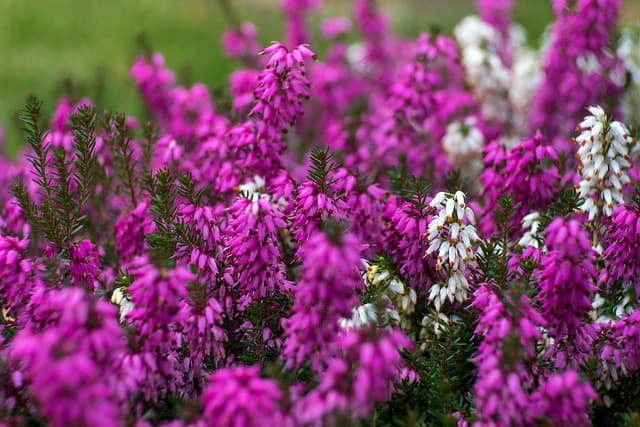
Winter Heath, scientifically known as Erica carnea, is another jewel in the crown of winter flowers for Zone 8 gardens. This evergreen shrub showcases delicate pink, purple, or white flowers that bloom prominently from late winter to early spring. The tiny blossoms emerge in clusters, creating a delightful show that can brighten even the most overcast days. With a compact growth habit, this hardy plant can adorn borders or form a delightful low hedge, seamlessly blending beauty with functionality.
One of the key benefits of Winter Heath is its adaptability to challenging growing conditions. It thrives in well-drained, acidic soil and is particularly well-suited to alpine or rock gardens. Its preference for sun to partial shade allows it to flourish in varied light conditions, offering gardeners many options for placement and design.
Beyond its aesthetic appeal, Winter Heath plays a vital role in a wildlife-friendly garden, providing essential nectar for bees and other pollinators during the scarce winter months. The maintenance of this shrub is relatively low, as it tolerates drought and requires little pruning unless to maintain its shape. Regular deadheading after flowering encourages a neat appearance and promotes healthy growth.
Due to its evergreen features, Winter Heath offers year-round interest, keeping your winter garden lively even after the blooms have faded. Adding this vibrant flower to your landscape can create a backdrop of color to complement winter Aconite and other seasonal blooms, making your garden a true oasis of beauty in the colder months.


